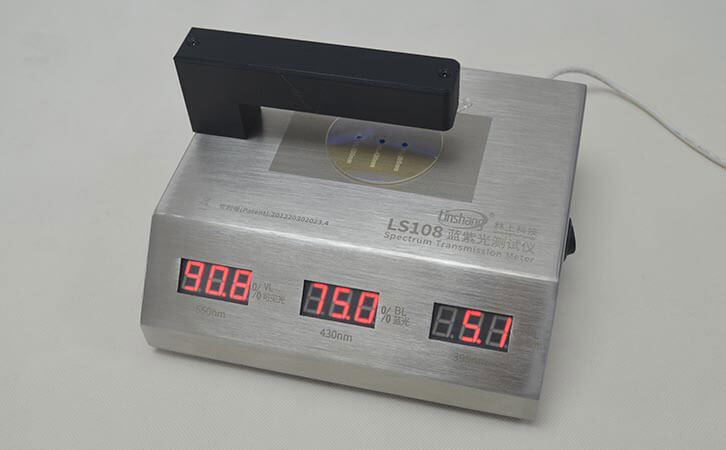Transmission Meter | Anti-blue Effect Test
Light is an elusive substance, clearly visible but intangible. Scientists have defined the nature of light and pointed out that light has wave-particle duality. It can propagate like waves, but also has the properties of particles. It guides people's lives, illuminates the growth of all things in nature, brings life and hope and is gorgeous at the same time. The combination of prism and glass has made optical art.
But things are always two-sided. The benefits of optical applications also bring the bad side. For example, blue light is harmful to human eyes, strong sunlight in summer and light pollution on the exterior of buildings.
1. Blue light pros and cons
From a physics perspective, light has a binomial property, so it can both reflect and refract, as well as interference, diffraction and other phenomena. When light passes through the prism or the two layers above and below the glass, because of the overlap of same wavelength, interference will occur-some areas will be strengthened and some areas will be weakened. Through this principle, it is possible to artificially adjust the light transmittance and thickness of the lens to reduce the harmful light. Blue light lenses on the market and anti-glare glass on buildings all use this principle. It also relies on the principle of light interference and diffraction.
2. How to detect the anti-blue effect of the lenses?
With the help of accurate optical and electronic sensors and computing chips, the Linshang LS108 transmission meter can complete the measurement only by placing the tested lens on the isntrument. Similarly, if it is glass, you only need to choose a glass-specific transmission meter . The whole process is easy and straightforward. You must read the numbers directly. Even the ultraviolet rays that are not visible to the naked eye, the infrared rays can be measured with a professional transmission meter. It has greatly improved the technology of enterprise coating process and also provided a good tool for market inspection and supervision.
Undoubtedly, with the continuous progress and development of human science, transmission meters have become richer in types and styles. The application scenarios have become more diverse. Transmission meter is also just a small tool, but behind them are the great changes that technology has made in people's lives. It is believed that in the future, with the use of a wide range of transmission meters, light can also become softer and more intimate.
- Choosing the Right Window Tinting Film
- Window Tint Meter | Pros and Selection Methods of Architectural Membrane
- Advantages of LS110H and LS110A Split Transmission Meter
- Best Choice:LS182 Solar Film Transmission Meter
- Solar Power Lightens Up with Thin-Film Technology
- What is the Solar Heat Gain Coefficient Ratings (SHGC)
